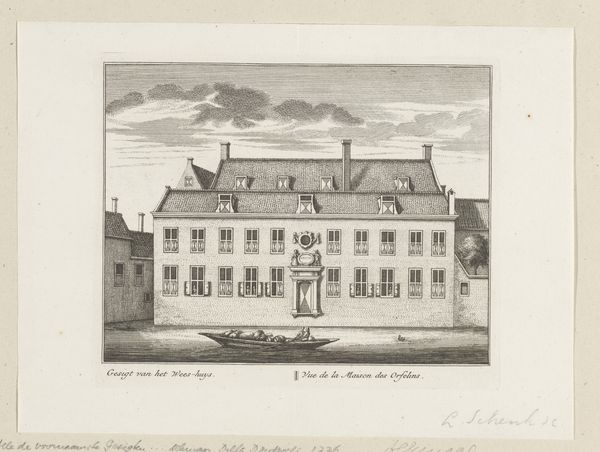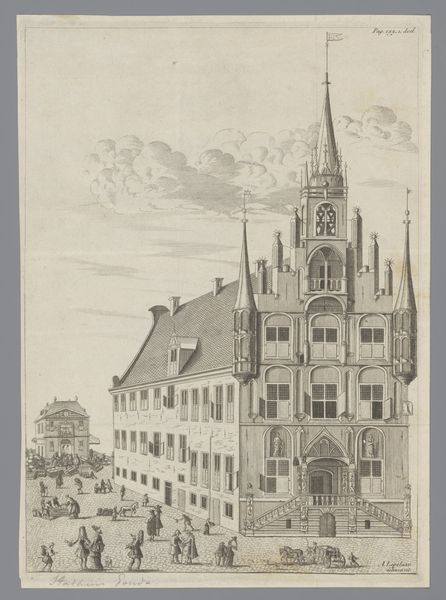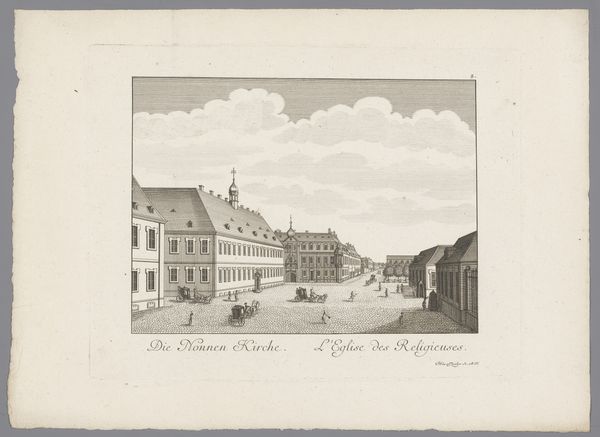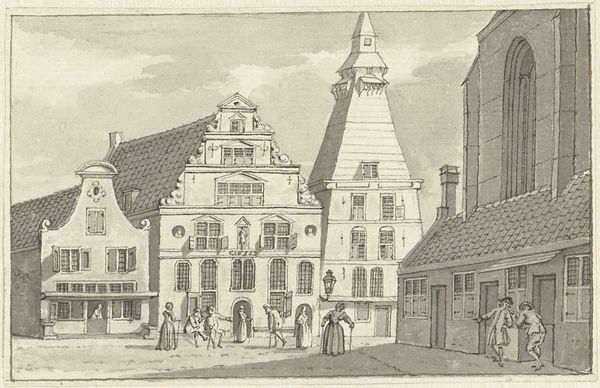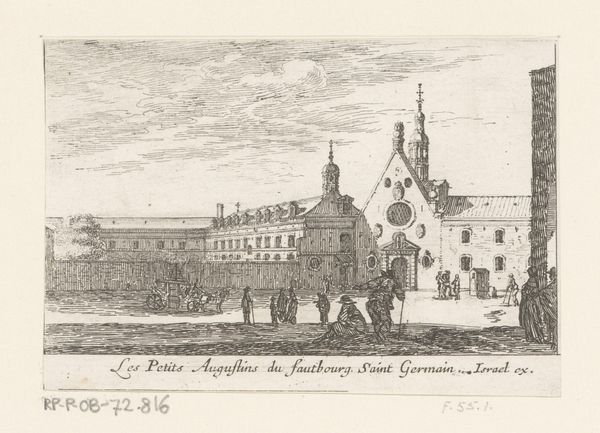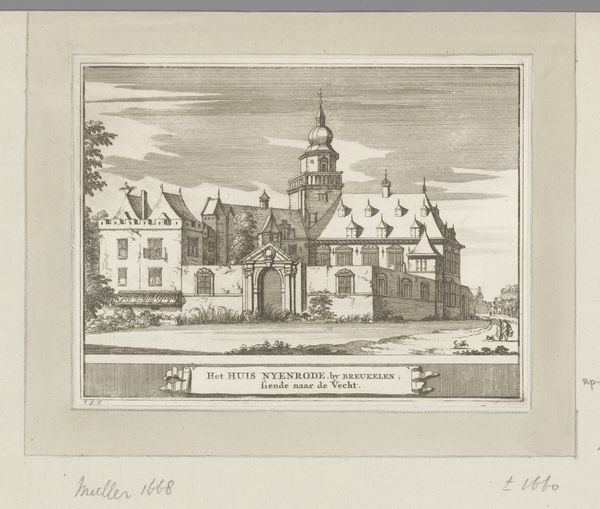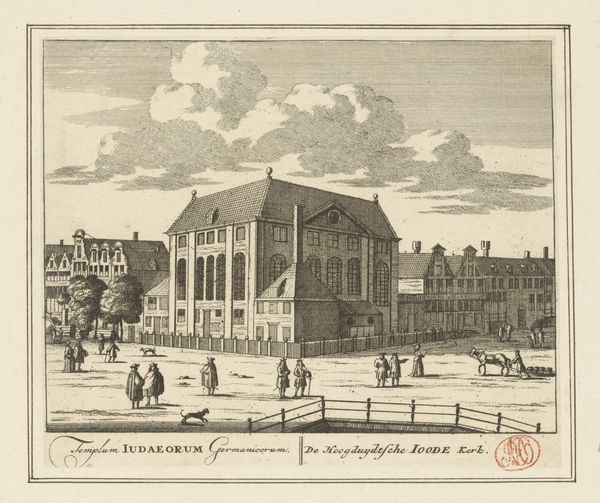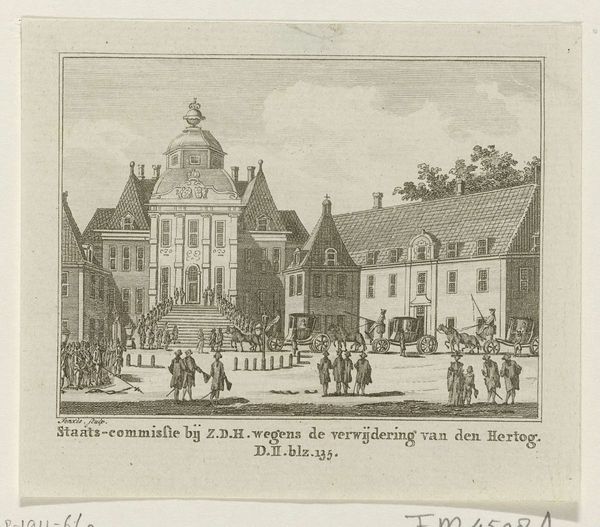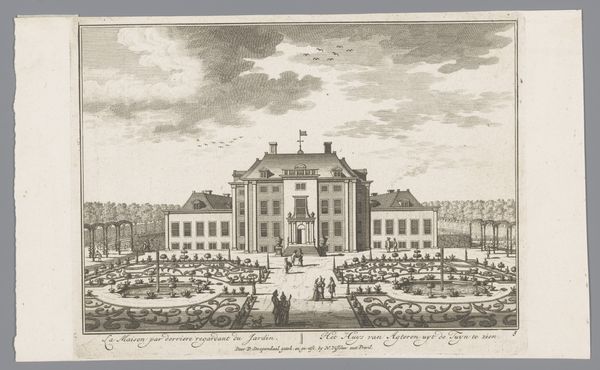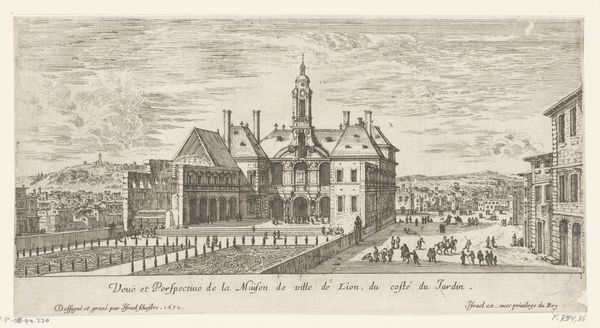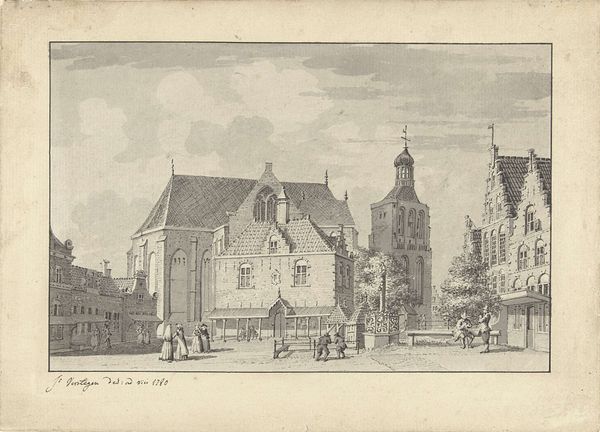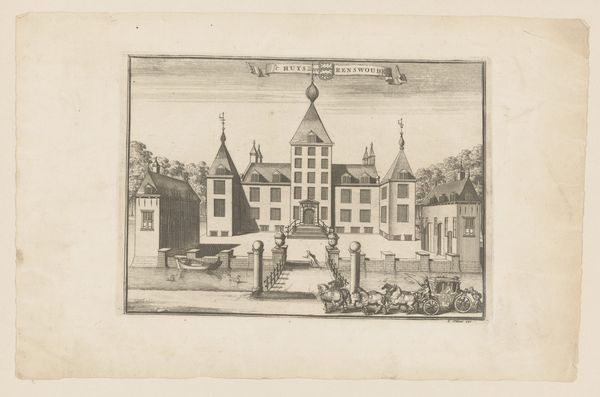
Dimensions: height 79 mm, width 112 mm
Copyright: Rijks Museum: Open Domain
Curator: Here we have an engraving titled "Gezicht op het veer bij Gorinchem" or "View of the Ferry at Gorinchem," attributed to Abraham Rademaker, dating sometime between 1725 and 1803. It resides in the collection of the Rijksmuseum. Editor: It's fascinating how the etching almost monumentalizes such an ordinary scene. The cross-hatching technique gives real weight to the buildings, like the labor is baked right in. Curator: Rademaker was indeed known for documenting towns and landscapes, contributing significantly to the visual culture and collective memory of the Dutch Republic. Prints like these served a vital public function, disseminating information and shaping perceptions of place. Editor: Exactly! It's not just some idle artistic whim. The painstaking details of the architecture—each brick seemingly etched with purpose—demonstrates a deliberate process tied to production and consumption. This engraving itself is an artifact of labour, designed to be reproduced and disseminated to a wider audience. How were such views consumed and displayed? Curator: Often these prints found their way into books, offering visual complements to travelogues or topographical surveys. Wealthier individuals may have even collected them in albums, creating a personal inventory of the nation's landmarks. We might see them functioning in civic or guildhalls as well. This is image is clearly promoting Gorinchem, highlighting their City Hall and orderly society. Editor: Look at the small groups of figures placed there, at leisure around the base of the Stadthuis. They’re very carefully posed – tiny monuments of material prosperity amidst that brickwork. It feels almost like social engineering through imagery. Who paid for the etching? How many copies existed? Curator: An excellent question, as these images are clearly not ideologically neutral. Further archival investigation could indeed reveal insights into Rademaker's patrons and the intended audiences. These are important reminders that landscapes too are constructs, not merely innocent depictions. Editor: Indeed! Thanks to its careful construction and production, even a “simple” engraving can still yield a lot about its contemporary values. Curator: It reminds us how the art market today differs so little from these previous practices. Editor: Couldn't agree more!
Comments
No comments
Be the first to comment and join the conversation on the ultimate creative platform.
